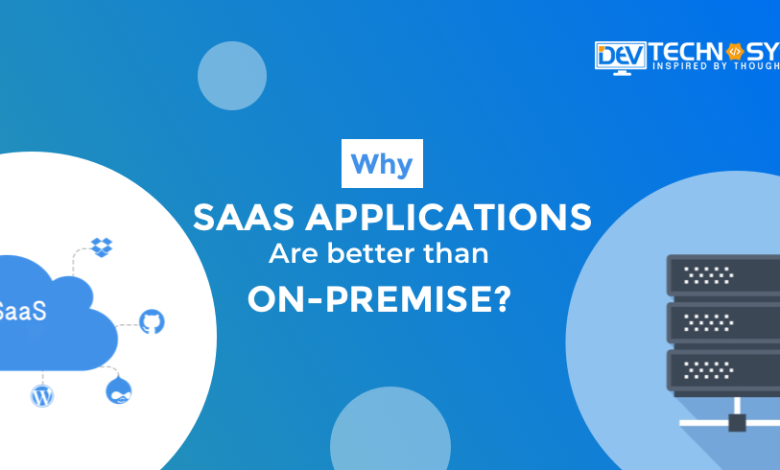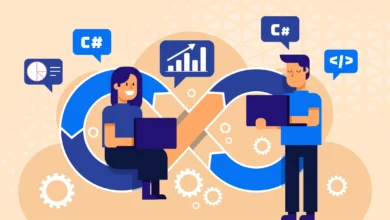Why SaaS Applications Are Better Than On-premise

The race of adopting technical interference for the business is highly revered in the industry. Whether you look for a CRM solution or the Enterprise Resource Planning Software, there are many ways of implementing the software.
Both the Software as a service and on-premise software is a popular medium for implementing the software and both can help the business grow with the help of custom software development companies. However, it is completely up to you to decide which works best.
The computing technology offers industry unlimited opportunities for dramatically improving productivity with a considerable reduction in cost. Presenting the challenge, the stakeholders have a great choice between enhancing the in house capabilities and moving the enterprise computing solution to the cloud.
The decision of adopting one type of industry IT solution over others depends on what works best for your company and your budget. Before making one choice, one must learn the difference between SaaS and on-premise.
The industry of web application development has extended and took the form of SaaS. According to the analysis and direct comparison on the basis of critical corporate demands, cloud computing is the most comprehensive response.
Key Difference Between SaaS and On-premise Solutions
1. Implementation
The great difference between the SaaS and on-premise software development services is the implementation. In the case of SaaS, the implementation term is less relevant. Users or businesses can access the SaaS software via the internet and do not have to install it on the hard drives.
The SaaS provider offers access to the application and the provider only is responsible for the speed, performance, and security of the app. The user can access the SaaS software with the help of a browser.
For an on-premise solution, one can install the software over the local infra. It is a long process and the provider sells the software to the client. This model features the in house installation of the software where the app is host and access on the company grounds. The con is that the software cannot be used outside the premise.
2. Freedom
For the on-premise software, the client possesses the right to customizing the software and implementing the changes. The freedom to make changes makes the software completely befitting for the rapidly growing business. The need for a change in CRM capabilities is crucial to be considered.
SaaS development services for businesses are not given such freedom to make the desired changes. If the software is implemented for the new startup and requires the tweak, the dense complications are handled by the provider, and changes are implemented by the provider only.
Nevertheless, in terms of scalability, SaaS is a more realistic choice. We will read more about this ahead.
3. Budget Consideration
While adopting software built by custom software development companies, it is always important to work with the fixed budget. The cost is the most influential factor and the choice between both on-premise and SaaS is highly affected by the budget.
SaaS is the subscription-based software, where the business pays as peruse. The ongoing subscription fee is typically for 12 months or longer. The on-premise solution includes the perpetual fee where one can purchase the solution in one go. The software, which fits your current budget, is not meant to fit for you’ve swollen up business requirements.
This way the annual subscription base software is more suitable. The usability then can be scaled up with a costlier subscription. The subscription can also be scaled down if business demands so.
4. Maintenance and Support
For the on-premise industry IT solution, the maintenance cost, and the responsibility lie with the owner. The owner of the software needs to have an IT department for maintaining software health.
While working the software, it is obvious to face some glitches. IT departments need to solve the issues rapidly and work quickly for restoring the performance. Another concern is security.
SaaS development service subscribers need not to concern about the maintenance and its cost. Users can take the safety measures and the providers can resolve the tech issues.
SaaS software relieves the stress of the IT department for keeping a check on the oncoming attacks or rising performance issues. The model is suitable for companies that don’t want to increase the cost.
5. Mobility
On-premise software development services are set on the local machine, which becomes hard to access from out of the premise. For implementing so and accessing the software remotely, the user needs to navigate through the intranet setting, VPNs, and firewall settings.
SaaS software is set up on the cloud and accessed by the subscribers. A user can work from anywhere and can access the software anytime. Using the SaaS model, users can eliminate the difficulties, which lie with accessing the on-premise software. You just need an internet connection and browser to connect.
6. Staff
With on-premise software, the employer needs to hire a huge workforce, for working, maintenance, security, safety, performance, and continuous development of the software.
On the other, the overhead cost lies in the court of the provider. There is no requirement for hiring huge IT staff. The advantage is considerable because it reduces the recurring cost.
Various Stages of Mobile App Development
Conclusion
Along with the above points, local compliance is also an important factor for the choice. However, the SaaS model is beneficial for most of the growing organizations and the businesses can reduce the overhead cost.
While approaching any of the models, the businesses should give heed for the legal and regulatory authority. The stakeholders must understand that SaaS and on-premise are not an all or nothing task. You can always migrate to standard applications while keeping other processes for custom SaaS apps.




